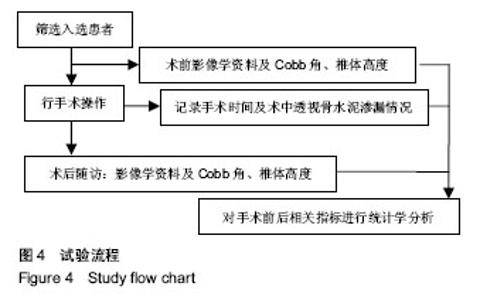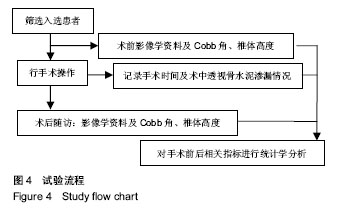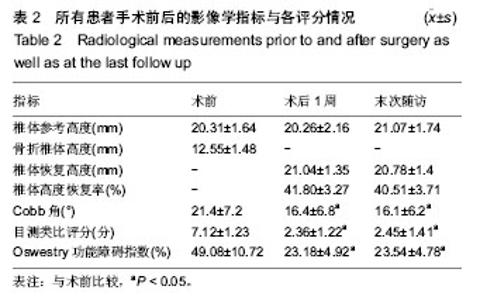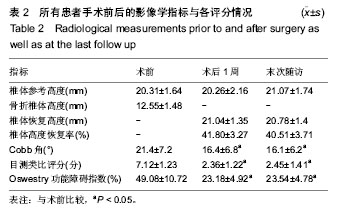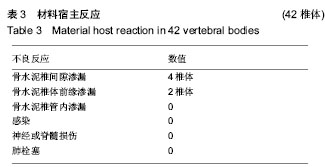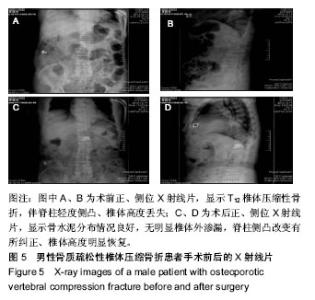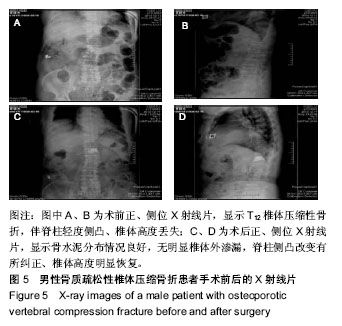| [1]中国健康促进基金会骨质疏松防治中国白皮书编委会.骨质疏松症中国白皮书[J].中华健康管理学杂志,2009,3(3):148-154.[2]Ross PD.Osteoporosis: frequency, consequences, and risk factors.Arch Int Med.1996;156:1399.[3]罗先正,王宝军.骨折与骨质疏松[J].中华骨科杂志,1997,17(1):11.[4]Riggs BL, Melton LJ 3rd.The worldwide problem of osteoporosis: insights afforded by epidemiology.Bone.1995;17(5 Suppl):505S-511S..[5]Kado DM,Browner WS,Palermo L,et al.Vertebral fractures and mortality in older women: a prospective study.Arch Intern Med (Chic). 1999;159 (11): 1215-1220.[6]Klazen CAH,Lohle PNM,de Vries J,et al.Vertebroplasty versus conservative treatment in acute osteoporotic vertebral compression fractures (Vertos II): an open-label randomised trial.Lancet. 2010;376 (9746):1085-1092.[7]Farrokhi MR,Alibai E,Maghami Z.Randomized controlled trial of percutaneous vertebroplasty versus optimal medical management for the relief of pain and disability in acute osteoporotic vertebral compression fractures.J Neurosurg Spine.2011;14(5):561-569.[8]Buchbinder R,Osborne RH,Ebeling PR,et al.A randomized trial of vertebroplasty for painful osteoporotic vertebral fractures.N Engl J Med. 2009;361(6):557-568.[9]Genant HK,Cooper C,Poor G,et al.Interim report and recommendations of the World Health Organization task-force for osteoporosis.Osteoporos Int.1999;10(4):259-264.[10]Guan H,Yang H,Mei X,et al.Early or delayed operation, which is more optimal for kyphoplasty? A retrospective study on cement leakage during kyphoplasty.Injury.2012;43(10):1698-1703.[11]蒋协远,王大伟.骨科临床疗效评价标准[M].北京:人民卫生出版社, 2005: 123-124.[12]Werneke M,Hayes D,Deutscher D.Clinical utility of the Oswestry Disability Index for measuring the function of patients with low back pain.Spine J.2018;18(4):712-713.[13]Clement RC,Welander A,Stowell C,et al.A proposed set of metrics for standardized outcome reporting in the management of low back pain.Acta Orthop.2015;86(5):523-533.[14]Kanis J A. Diagnosis and Clinical Aspects of Osteoporosis//Pocket Reference to Osteoporosis. Springer, Cham, 2019: 11-20.[15]Lindsay R,Silverman SL,Cooper C,et al.Risk of now vertebral fracture the year following a fracture.JAMA.2001;285:320-323.[16]Ross PD,Davis JW,Epstein RS,et al. Pre-existing fractures and bone mass predict vertebral fracture incidence in women.Ann Intem Med. 1991;114:919-923.[17]Kado DM,Borwner WS,Palemro L,et al. Vertebral fractures and mortality in older women: a prospective study. Study of Osteoporotic Fractures Research Group.Arch Intern Med.1999;159(11):1215-1220.[18]Si L,Winzenberg TM,Palmer AJ.A systematic review of models used in cost-effectiveness analyses of preventing osteoporotic fractures. Osteoporos Int.2014;25(1):51-60. [19]Yoo JH,Moon SH,Ha YC,et al.Osteoporotic fracture: 2015 position statement of the Korean society for bone and mineral research.J Bone Metab.2015;22(4):175-181.[20]Fraser LA,Ioannidis G,Adachi JD,et al.Fragility fractures and the osteoporosis care gap in women: the Canadian Multicentre Osteoporosis Study.Osteoporos Int.2011;22(3):789-796.[21]Willson T,Nelson SD,Newbold J,et al.The clinical epidemiology of male osteoporosis: a review of the recent literature.Clin Epidemiol. 2015;7: 65-76. [22]Sale JE,Beaton D,Bogoch E.Secondary prevention after an osteoporosis-related fracture: an overview.Clin Geriatr Med. 2014; 30(2):317-332. [23]刘强,胡永成,等.骨质疏松性骨折诊疗指南[J].中华骨科杂志, 2017,37(1):1-10.[24]Kado DM,Browner WS,Palermo L,et al.Vertebral fracture and mortality in older women:a Prospective study.Arch Intern Med.1999;159:487-492.[25]Gabbert P,Deramond H,Rosat P,et a1.Preliminally note on the treatment of rertebr M angioma by percutaneous aerytie vertebroplasty. Neurechirursle. 1987;33(2):166-168. [26]Lieherman IH,Dudenev S,Reninhardt MK,et al.Initial outcome and eficacy of “kyphoplasty”in the treatment of painful osteoperotic vertebral compression fractures. Spine (Phila Pa 1976). 2001;15:26(14):1631-1638.[27]Peters KR,Guiot BH,martin PA,et a1.Vertebroplasty for osteoporotic compression fractures:current practices and evolving techniques. Neurosurg.2002;51(5 Suppl):S96-5103.[28]陈柏龄,谢登辉,黎艺强,等.单侧PKP骨水泥注射过中线分布对压缩性骨折椎体两侧刚度的影响[J].中国脊柱脊髓杂志,2011,21(2):118-121. |
